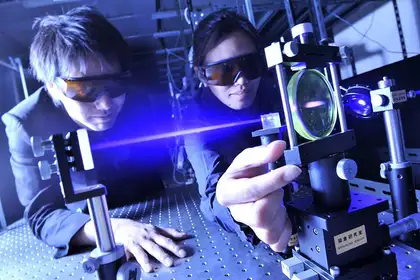
Dr Marilou Raduban and Dr Anke Zernack both receive $80,000 in funding for their research projects.
Two Massey academics have been successful in the most recent round of the Royal Society Te Apārangi’s Catalyst: Seeding Fund.
This round of funding was for projects that aim to initiate new international collaborations of strategic importance to New Zealand.
Early career physicist Dr Marilou Raduban has been awarded $80,000 Catalyst Seed funding to explore the development of semiconductor thin films as radiation sensors.
Dr Raduban from the School of Natural and Computational Sciences has received $80,000 for her two-year project; “Developing semiconductor thin films as radiation sensors.”
This will establish a new collaboration between Massey University and the Institute of Physics Academy of Sciences in the Czech Republic by bringing together experts in semiconductor thin film fabrication, materials characterisation, sensor technology and electrical engineering.
“I am excited about the opportunities that will arise from establishing a collaboration with the Academy of Sciences of the Czech Republic through this Catalyst: Seeding grant; not just for the creation of new knowledge in semiconductor Physics that will advance the development of radiation sensors with many applications, but also for the enhancement of research capabilities at Massey University.
”The team members will work together to determine the ideal processes and parameters for fabricating the semiconductor thin films to help develop radiation sensors that will be integrated onto a single chip with a readout circuit, allowing for miniature and lightweight sensors with a simple structure for applications in radiation imaging and therapy, sterilisation, and border security.
Dr Raduban will lead the New Zealand team consisting of Dr Rezaul Hasan (Massey University, School of Food and Advanced Technology) and Professor Grant Williams (Victoria University of Wellington), while her collaboration partner Dr Jiří Olejníček will lead the Czech team.
Maintaining such extensive international collaborations during a global pandemic is not easy, but Dr Raduban has used technology to expand her international reach– giving multiple online lectures during the pandemic.
Recently Dr Raduban has been invited to deliver virtual lectures at the International School on Photonics and Applications (ISPA-2020) in Vietnam, the 9th Global Conference on Materials Science and Engineering (CMSE2020) and also at the 5th International Conference on Smart Materials and Nanotechnology (SmartMat@2020).
Dr Anke Zernack from the School of Agriculture and Environment was also awarded $80,000 for her two-year project; “Tracing Māori pumice artefacts to their volcanic source: implications for spatiotemporal variations of use in New Zealand archaeology.”
Dr Zernack says she’s “absolutely thrilled to be receiving this prestigious funding to work with an amazing team of multi-disciplinary international and NZ scientists on a topic that I am passionate about.
“Bringing the different disciplines together will contribute to gaining more holistic insights into interactions between New Zealand's natural environments and forces and tangata whenua, including traditional use of available resources.”
Pumice has been used by Māori for a wide range of spiritual and practical purposes, however, in contrast to valuable regionally traded materials such as pounamu, argillite and obsidian, the sourcing of archaeological pumice has thus-far been largely ignored.
Dr Zernack’s project aims at tracing selected Māori pumice artefacts from Auckland Museum to their volcanic origin and thus primary source area.
The project is a great start into gaining a better understanding of traditional use of pumice resources by Maori in the North Island, the different types of pumice used, and their volcanic origin, says Dr Zernack.
“I am hoping this initial collaboration will be seeding a larger interdisciplinary research programme that combines aspects of volcanology, archaeology and Mātauranga Māori to explore pumice use by Māori throughout New Zealand”.
Having grown up in Germany near the East Eifel Volcanic Field, a region that is characterised by scoria cones and explosive volcanic centres, Dr Zernack has always had a fascination with pumice and she says she’s thrilled to combine her life-long interest with the culture and history of Aotearoa, her new home.
“This project brings together my passion for volcanology, archaeology and Mātauranga Māori and I am excited to be able to contribute to a better understanding of Maori material culture and traditional tikanga through this work.”